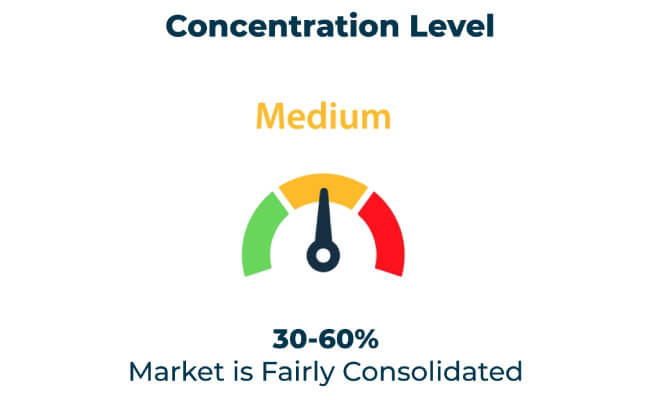The blister packaging market is soaring high due to the continuous rise in the demand for single-use, tamper-proof, and eco-friendly packaging solutions. The increase in online shopping, improved healthcare, and the rise in sustainability awareness are the principal reasons for this growth.
Blister packs are particularly favored in the pharmaceutical sector due to their protective attributes and the ability to increase patient adherence to medication through unit-dose packaging. Parallelly, food and consumer goods brands are harnessing the benefits of blister packaging like convenience, portability, and branding.
Explore FMI!
Book a free demo
The blister pack market is creating a rupture in the traditional packaging industry by introducing novelty with respect to convenience, sustainability, and flexibility. The escalating consumer inclination towards portion-controlled and single-serve products, along with the accountability to the environment, have increased the market growth potential by a great extent.
In-house blister packaging allows organizations to keep all processes under the management of production, quality, and proprietary technologies. This methodology is predominantly used by larger pharmaceutical companies that have massiveity and strict quality standards. This results in a closer relationship, ensuring shared formulations, and, in turn, reduces the risk of supply chain disruptions. Nevertheless, it usually entails big investments in machinery and manpower.
On the other hand, contract packaging comes across as a viable alternative in terms of cost and flexibility. Small to medium-sized businesses benefit from having more scalability and the specialists' help. Contract packaging enables manufacturers to concentrate on their core activities while their packaging partners delegating the production logistics as well as ensuring regulatory compliance. This model is incestuously fitting for sporadic demand alterations or new product debuts.
| Global Market Share & Industry Share (%), 2025E | Industry Share (%) |
|---|---|
| Top 3 (Amcor Plc, Sonoco, WestRock) | 25% |
| Rest of Top 5 (Constantia Flexibles, Klöckner Pentaplast) | 5% |
| Next 5 of Top 10 | 7% |
| Type of Player & Industry Share (%), 2025E | Industry Share (%) |
|---|---|
| Top 10 | 37% |
| Next 20 | 25% |
| Rest | 38% |

Year-over-Year Leaders
North America: The region holds 40% of the market share, which is a result of the high demand for advanced healthcare solutions and touch-proof packaging. The USA is the leading player in this sector thanks to the strict FDA regulations and the solid pharmaceutical sector. The augmented chronic disease prevalence and the increase in biologics are also impelling factors in the adoption of blister packaging.
Europe: Europe accounts for 30% of the market share due to the strong sustainability norms and the ever-increasing use of new materials. Certain countries like Germany, France, and the UK are leading in adopting ecological and biodegradable blister packaging alternatives. The European Green Deal has motivated the businesses to invest in sustainably sourced materials and the development of a circular economy.
Asia-Pacific: With a CAGR of 6.8%, this region is the fastest-growing market and the driving force for this trend is the ever-escalating healthcare expenditure, urbanization, and consumer demand for safety and convenience. The countries of China, India, and Japan are dominating the market. Government agency supporting environmentally friendly packages and increased popularity of blister packs in the personal care and food sectors are key drivers behind the growth.
Rest of the World: South America, the Middle East, and Africa are the areas that are currently considered emerging markets with a lot of potential on offering, as the existing rise in the middle class along with the need for single-use pharmaceutical packaging grows. The primary aim of export-oriented manufacturers is to sell to these markets through their inexpensive production methods.
| Tier | Key Companies |
|---|---|
| Tier 1 | Amcor Plc, Sonoco, WestRock |
| Tier 2 | Constantia Flexibles, Klöckner Pentaplast |
| Tier 3 | Bemis Company, Tekni-Plex, Sealed Air |
The blister packaging market is ready for a considerable transformation thanks to sustainability and technology innovation taking the lead. Companies that emphasize on eco-friendly materials, smart solutions, and regional expansion will privilege this process.
Definitions and Terminology
Research Methodology
The study employed primary research, specifically the interviews of the industry experts, and secondary data analysis along with the modeling process while the data accuracy was verified by the expert consultations and the stakeholders' feedback.
Market Definition
The blister packaging market refers to both flexible and rigid packaging formats that have been specifically designed for the pharmaceutical, food and consumer goods industries. Non-flexible bulk packaging; however, is out of the scope of the study.
The global blister packaging market is projected to witness a CAGR of 2.4% between 2025 and 2035.
The global blister packaging market is expected to reach USD 37.9 billion by 2035.
The share of the top 10 players is 37% in the global blister packaging market.
Amcor Plc, Sonoco, and WestRock are some of the leading manufacturers of blister packaging.
PVC Packing Straps Market Report – Key Trends & Forecast 2025 to 2035
Reusable Packing Market Analysis – Size, Share & Forecast 2025 to 2035
Poultry Packaging Market Insights - Trends & Future Outlook 2025 to 2035
Polystyrene Packaging Market Analysis - Size & Growth Forecast 2025 to 2035
Paper Bubble Wrap Market Trends - Demand, Innovations & Growth 2025 to 2035
Packaging Inserts Market Insights - Growth & Forecast 2025 to 2035

Thank you!
You will receive an email from our Business Development Manager. Please be sure to check your SPAM/JUNK folder too.